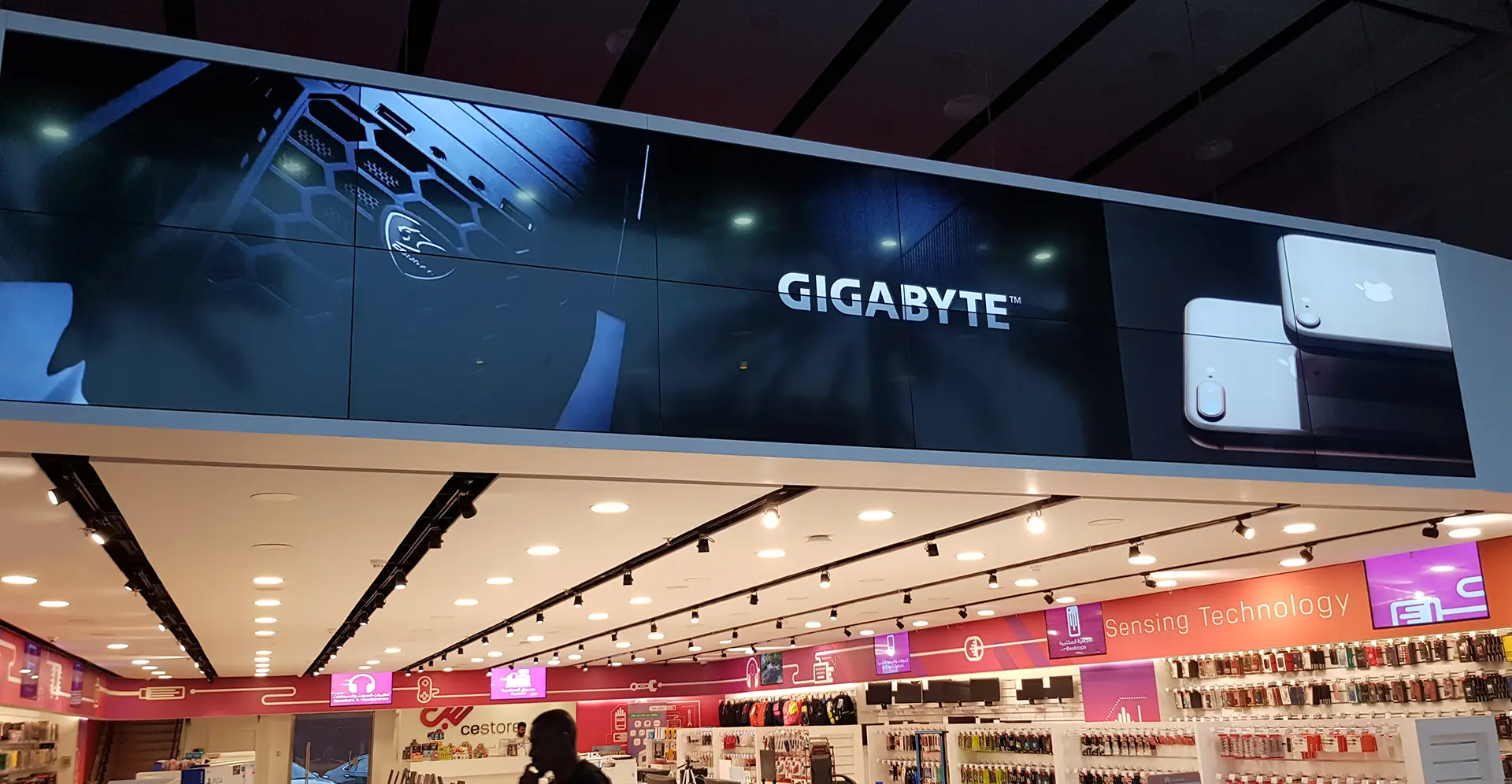Sync your Content Across
Multiple Screens
When you install many screens in the same area, you need to keep in mind how content will be viewed. If you plan to show the same content on every screen, let’s say a video advertising a product or service, you will probably want all the videos to play synchronized content across all visible screens. Otherwise the content will be slightly off on each screen and the results may not meet your expectations.
This is where multi-player synchronization comes into play.
Usually, each media player works independently. They check in with a central server to get new content and schedule updates. They also connect to live data servers to show things like news and weather.
If you put two media players side by side and show the same thing on both at the same time, there’s often a little delay. Each player takes a bit of time to get and start showing its updates. This means the content isn’t perfectly in sync.
Another issue is with the internal clock in each player’s processor. These clocks are never exactly the same. Even a tiny difference, like a few milliseconds, means that each player’s clock is slightly different.
When you put all this together, it’s clear that content won’t play in sync on multiple devices. And the longer the content plays, the more noticeable the gap gets.
So, how do you make sure multiple devices play content at the same time?
Websockets power advanced multi-player synchronization
You use a technology called WebSockets. Wikipedia explains WebSocket as “a computer communications protocol, providing full-duplex communication channels over a single TCP connection.” In simple terms, WebSockets allow computers to talk to each other in real-time.
In a digital signage context, standalone player software that uses WebSockets can exchange information between devices to ensure the content is synchronized on every screen. WebSockets also provides a persistent connection so content synchronization can be maintained pretty well indefinitely.
You may think this is well and fine, but what happens when you deploy content to a mix of hardware types running on different operating systems? Like when you have a mix of Windows PCs, Android devices, and System on a Chip displays on the same digital signage network.
Well this is where things get complicated. While some digital signage software apps support player synchronization, none support the feature in mixed hardware environments. This means you can possibly synchronize all your Windows players together, but not with Android or SoC players.
Fortunately, Navori made a breakthrough and created a new Navori Player software add-on module that supports multi-hardware and multi-OS synchronization.
How does it work?
Navori’s engineers created a time stamp streamer that synchronizes each media player’s clock with Navori Server. This feature is precise to 1/20th of a second so content is fully synchronized across all devices. There’s only one requirement. All synchronized content must have the same duration.
Navori customers can publish videos, images and templates with embedded objects and live data knowing the content will play perfectly synchronized across any number of players regardless of the hardware or operating system at the other end.
This add-on is available for Windows, Android and several System on Chip hardware products running on Samsung Tizen, LG webOS and various displays from Philips, Panasonic, and Elo touch.
Who is this module for?
Here are some examples of applications that can benefit from synchronized players:
- Train and metro stations where screens are installed in a large atrium. This would also apply to airport terminals, bus stations and other similar venues.
- Conference centers, trade show halls.
- Shopping malls, food courts and other public spaces.
- QSR Restaurant chains and fast casual restaurants who use multi-screen digital menu boards.
- Sports stadiums and cinemas.
- Automobile dealerships, banks and other retail locations.
- Any large venue where groups of screens can be viewed from multiple vantage points.
Are there other benefits to Multi-Player Synchronization?
- Synchronized content can be more engaging and have a positive impact on viewer’s perception.
- Redundancy: If one player goes down, only one screen goes dark.
- Replacing a PC with multi-video outputs is more time consuming than swapping out a small Android based media player.
- Multi-output video cards and high-end PCs tend to be expensive and more complicated to set-up than Android devices or System on Chip displays.
- Multi-screen/single PC scenarios also require long HDMI cable runs, or video distribution networks that run on video over Cat-5 or fiber.
- Video distribution networks require many components, such as hubs and signal repeaters that add more points of failure, complexity and additional costs.
It’s safe to say, multi-player synchronization is a very useful feature that can enhance the audience experience.
